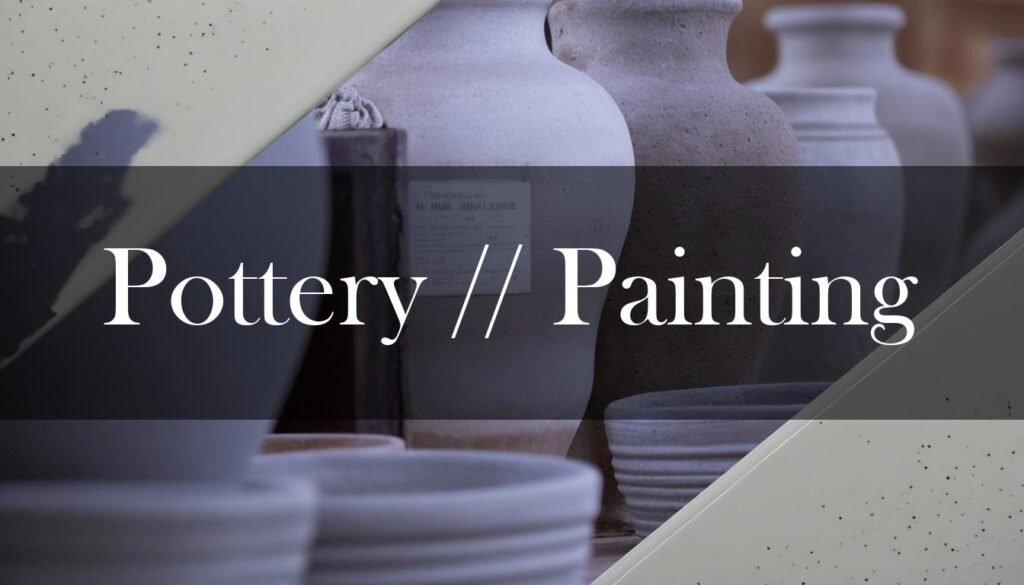Diving into the world of pottery painting opens up a realm of creative possibilities, transforming simple ceramic pieces into personalized treasures. Whether you’re a beginner or a seasoned artist, the joy of adding color and design to pottery is truly special. Let’s explore some inspiring ideas to ignite your imagination, along with essential techniques and tips to ensure your creations stand the test of time.
For beginners, starting with simple yet striking designs can be incredibly rewarding. Polka dots, with their playful charm, are a fantastic choice. You can use a single color for a classic look or mix vibrant hues to create an eye-catching effect on mugs, plates, or bowls. Floral designs are another excellent option, bringing a touch of nature’s elegance to your pieces. Delicate flowers like roses or daisies can add a whimsical feel, whether you opt for a full floral pattern or a few subtle blooms. If you prefer clean lines and modern aesthetics, geometric shapes like triangles, circles, and squares in bold colors can make your pottery stand out, offering a contemporary touch to your creations. For a meditative and intricate design, try mandala patterns. These symmetrical, circular patterns can bring a sense of calm to your ceramic pieces, whether you use bold colors or a monochromatic palette. Animal motifs are also a delightful way to add personality to your pottery. From cats and dogs to exotic wildlife, depicting animals through silhouettes or detailed portraits can make your pieces truly unique.
This video gives a great introduction to glazing pottery, a key step in the process:
“Embrace the imperfections; they add character to your handmade creations.”
Once you’re ready to move beyond basic designs, exploring different painting techniques can elevate your pottery to the next level. Color blocking, which involves painting large, solid areas of color, is perfect for creating bold and modern designs. Use painter’s tape to section off areas and paint each section with complementary colors. Layering colors, where you apply multiple coats of paint, adds depth and dimension. Start with a base color and let it dry completely before adding additional layers of different shades. Sponging creates a textured, mottled effect by dabbing a natural sponge dipped in paint onto the pottery surface, ideal for blending colors and adding visual interest. Stenciling allows for precise patterns; simply place a stencil on the pottery and dab paint over it with a sponge or brush. For a more free-flowing look, marbling involves pouring different colors of paint mixed with a pouring medium onto the pottery, creating swirling, abstract designs. Splatter painting adds a dynamic touch by flicking paint onto the surface with a brush, resulting in a spontaneous and playful design.
- Color Blocking: Bold and modern designs using painter’s tape.
- Layering: Adds depth with multiple coats of different shades.
- Sponging: Creates texture with a natural sponge.
- Stenciling: Precise patterns using stencils.
- Marbling: Swirling designs with poured paint.
- Splatter Painting: Spontaneous designs with flicked paint.
Choosing the right type of paint is crucial for achieving the desired results and ensuring the durability of your artwork. Underglazes are colored slips applied before firing, ideal for detailed designs and vibrant, stable colors. Overglazes, or lusters, are applied after glazing and firing, offering a range of colors and effects, including metallic finishes. Acrylic paints are easy to use and widely accessible, perfect for non-functional decorative pieces, but they require a sealant for added protection. Enamel paints provide a glossy, durable finish suitable for functional items, while ceramic paints are specifically designed for ceramics and require kiln firing to set the colors permanently. Ceramic markers are excellent for adding fine details and lettering. To protect your painted pottery, sealing is essential. For acrylic paint on unglazed ceramic, apply a water-based polyurethane varnish and consider baking the piece in an oven to cure the paint. For glazed ceramic, use a clear ceramic glaze followed by kiln firing, or apply a spray sealer for protection against moisture and UV damage.
Remember, pottery painting is as much about the process as it is about the final product. Embrace the journey, experiment with different techniques, and most importantly, have fun creating your unique ceramic masterpieces. Use resources such as articles on what paints to use on pottery, and tutorials on how to paint ceramics, to further improve your painting!





